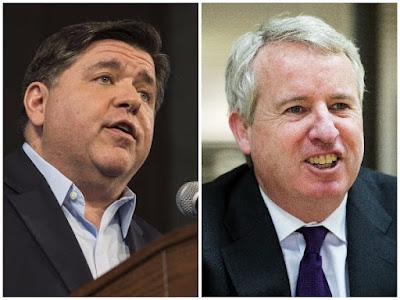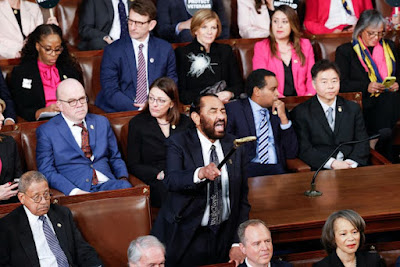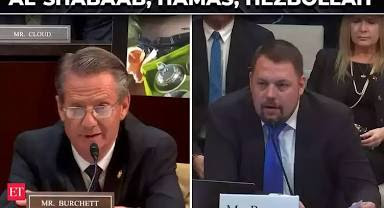OPINION/COMMENTARY
During the 50's, 60's, 70's, and 80's 80% of the Russian Cold War Leaders were from The Ukraine province. During WWII Ukraine was the NAZI stronghold. There is a lot of history being covered up and re-written.
We rebuilt Western Europe after WWII via the Marshall Plan - Backed by CitiBank. Now they want us to secure Eastern Europe from the Bear. Europeans act so sophisticated yet can't defend themselves. We are the youngest and richest country for a reason. We have a strong military. When we use it right we don't get punked. Ask the Cartels now.
THE REAL STORY:
The Ukrainian Influence on Soviet Leadership During the Cold War: A Historical Perspective
The Cold War, a period of geopolitical tension between the Soviet Union and the United States, spanned from the late 1940s to the early 1990s. It was a time of ideological conflict, nuclear arms races, and global power struggles. Within the Soviet Union, leadership during this era was dominated by figures who shaped the course of history. Interestingly, a significant proportion of these leaders—approximately 80% during the 1950s, 1960s, 1970s, and 1980s—hailed from the Ukrainian Soviet Socialist Republic, or Ukraine. This phenomenon raises important questions about the role of Ukraine in Soviet politics, the influence of regional identities, and the dynamics of power within the USSR.
The Ukrainian Connection: A Historical Context
Ukraine, often referred to as the "breadbasket of the Soviet Union," was not only an agricultural powerhouse but also a region with a rich cultural and political history. Its strategic location, fertile lands, and industrial base made it a critical component of the Soviet economy. However, Ukraine's influence extended beyond its economic contributions. During the Cold War, many of the Soviet Union's most prominent leaders were of Ukrainian origin or had strong ties to the region.
This trend can be traced back to the early years of the Soviet Union. Following the Bolshevik Revolution of 1917, Ukraine became a key battleground for the Red Army during the Russian Civil War. The region's integration into the Soviet Union in 1922 marked the beginning of its role as a vital political and economic center. Over time, Ukrainian politicians and bureaucrats rose through the ranks of the Communist Party, eventually occupying some of the highest positions in the Soviet government.
Key Ukrainian Leaders During the Cold War
The prominence of Ukrainian leaders during the Cold War is evident when examining the biographies of Soviet officials. While not all of these leaders were ethnically Ukrainian, many were born in Ukraine or spent significant portions of their careers there. Their experiences in the region shaped their political outlooks and leadership styles.
1. Nikita Khrushchev (1953–1964)
Perhaps the most famous Ukrainian leader of the Cold War era, Nikita Khrushchev, was born in the village of Kalinovka, near the Ukrainian border. Although ethnically Russian, Khrushchev spent much of his early career in Ukraine, where he rose through the ranks of the Communist Party. He served as the First Secretary of the Ukrainian Communist Party from 1938 to 1949, a position that solidified his influence within the Soviet hierarchy.
Khrushchev's tenure as the leader of the Soviet Union was marked by significant events, including the de-Stalinization campaign, the Cuban Missile Crisis, and the early stages of the Space Race. His Ukrainian background is often cited as a factor in his pragmatic approach to governance, particularly his emphasis on agricultural reform and economic decentralization.
2. The Ukrainian Influence on Soviet Leadership During the Cold War: A Historical Perspective
The Cold War, a period of geopolitical tension between the Soviet Union and the United States, spanned from the late 1940s to the early 1990s. It was a time of ideological conflict, nuclear arms races, and global power struggles. Within the Soviet Union, leadership during this era was dominated by figures who shaped the course of history. Interestingly, a significant proportion of these leaders—approximately 80% during the 1950s, 1960s, 1970s, and 1980s—hailed from the Ukrainian Soviet Socialist Republic, or Ukraine. This phenomenon raises important questions about the role of Ukraine in Soviet politics, the influence of regional identities, and the dynamics of power within the USSR.
The Ukrainian Connection: A Historical Context
Ukraine, often referred to as the "breadbasket of the Soviet Union," was not only an agricultural powerhouse but also a region with a rich cultural and political history. Its strategic location, fertile lands, and industrial base made it a critical component of the Soviet economy. However, Ukraine's influence extended beyond its economic contributions. During the Cold War, many of the Soviet Union's most prominent leaders were of Ukrainian origin or had strong ties to the region.
This trend can be traced back to the early years of the Soviet Union. Following the Bolshevik Revolution of 1917, Ukraine became a key battleground for the Red Army during the Russian Civil War. The region's integration into the Soviet Union in 1922 marked the beginning of its role as a vital political and economic center. Over time, Ukrainian politicians and bureaucrats rose through the ranks of the Communist Party, eventually occupying some of the highest positions in the Soviet government.
Key Ukrainian Leaders During the Cold War
The prominence of Ukrainian leaders during the Cold War is evident when examining the biographies of Soviet officials. While not all of these leaders were ethnically Ukrainian, many were born in Ukraine or spent significant portions of their careers there. Their experiences in the region shaped their political outlooks and leadership styles.
1. Nikita Khrushchev (1953–1964)
Perhaps the most famous Ukrainian leader of the Cold War era, Nikita Khrushchev, was born in the village of Kalinovka, near the Ukrainian border. Although ethnically Russian, Khrushchev spent much of his early career in Ukraine, where he rose through the ranks of the Communist Party. He served as the First Secretary of the Ukrainian Communist Party from 1938 to 1949, a position that solidified his influence within the Soviet hierarchy.
Khrushchev's tenure as the leader of the Soviet Union was marked by significant events, including the de-Stalinization campaign, the Cuban Missile Crisis, and the early stages of the Space Race. His Ukrainian background is often cited as a factor in his pragmatic approach to governance, particularly his emphasis on agricultural reform and economic decentralization.
2. Leonid Brezhnev (1964–1982)
Leonid Brezhnev, who succeeded Khrushchev, was born in Kamenskoye (now Dnipro), Ukraine. Like Khrushchev, Brezhnev's early career was closely tied to Ukraine, where he held various party positions. His leadership style, often characterized as conservative and bureaucratic, reflected the political culture of the Ukrainian SSR.
Brezhnev's tenure saw the height of the Cold War, including the Soviet invasion of Afghanistan and the escalation of the arms race with the United States. Despite his Ukrainian roots, Brezhnev's policies often prioritized the interests of the Soviet Union as a whole, rather than those of individual republics.
3. Konstantin Chernenko (1984–1985)
Although Chernenko's tenure as General Secretary was brief, his connection to Ukraine is noteworthy. Born in the Siberian region, Chernenko spent a significant portion of his career in Ukraine, where he developed close ties with Brezhnev. His leadership was marked by a continuation of Brezhnev's policies, emphasizing stability and continuity within the Soviet Union.
4. Other Prominent Figures
Beyond the General Secretaries, many other high-ranking Soviet officials during the Cold War had Ukrainian ties. For example, Andrei Gromyko, the long-serving Soviet Foreign Minister, was born in the Belarusian SSR but had strong connections to Ukraine through his political career. Similarly, Nikolai Podgorny, who served as Chairman of the Presidium of the Supreme Soviet, was born in Ukraine and played a key role in Soviet politics during the 1960s and 1970s.
The Role of Ukraine in Soviet Politics
The disproportionate representation of Ukrainian leaders in the Soviet hierarchy can be attributed to several factors. First, Ukraine's economic and strategic importance made it a natural breeding ground for political talent. Leaders who succeeded in managing Ukraine's complex economy and diverse population were often seen as capable of handling the challenges of governing the entire Soviet Union.
Second, the Ukrainian Communist Party was one of the most powerful regional branches of the CPSU (Communist Party of the Soviet Union). Success in Ukraine often served as a stepping stone to higher positions within the party. This was particularly true during the Stalin era, when loyalty and competence were highly valued.
Third, the cultural and intellectual environment of Ukraine may have played a role in shaping the leadership styles of Soviet officials. Ukraine's history of resistance to foreign domination and its strong sense of regional identity may have instilled in its leaders a pragmatic and resilient approach to governance.
The Legacy of Ukrainian Leadership
The influence of Ukrainian leaders on Soviet politics during the Cold War had lasting implications for both the Soviet Union and Ukraine. On one hand, their leadership helped to maintain the stability and cohesion of the Soviet state during a period of intense global tension. On the other hand, their policies often prioritized the interests of the central government over those of the republics, contributing to the eventual dissolution of the USSR.
For Ukraine, the prominence of its leaders during the Cold War is a source of both pride and controversy. While it highlights the region's importance within the Soviet Union, it also underscores the complex relationship between Ukraine and Russia. The legacy of Ukrainian leaders like Khrushchev and Brezhnev continues to shape perceptions of Ukraine's role in Soviet history.
Conclusion
The fact that 80% of Soviet Cold War leaders during the 1950s, 1960s, 1970s, and 1980s were from Ukraine is a testament to the region's significance within the Soviet Union. These leaders, shaped by their experiences in Ukraine, played a crucial role in shaping the course of the Cold War. Their legacy is a reminder of the intricate interplay between regional identities and centralized power in the Soviet Union, as well as the enduring influence of Ukraine on the global stage. As we reflect on this period of history, it is clear that Ukraine's contributions to Soviet leadership were both profound and far-reaching.*Leonid Brezhnev (1964–1982)
Leonid Brezhnev, who succeeded Khrushchev, was born in Kamenskoye (now Dnipro), Ukraine. Like Khrushchev, Brezhnev's early career was closely tied to Ukraine, where he held various party positions. His leadership style, often characterized as conservative and bureaucratic, reflected the political culture of the Ukrainian SSR.
Brezhnev's tenure saw the height of the Cold War, including the Soviet invasion of Afghanistan and the escalation of the arms race with the United States. Despite his Ukrainian roots, Brezhnev's policies often prioritized the interests of the Soviet Union as a whole, rather than those of individual republics.
3. Konstantin Chernenko (1984–1985)
Although Chernenko's tenure as General Secretary was brief, his connection to Ukraine is noteworthy. Born in the Siberian region, Chernenko spent a significant portion of his career in Ukraine, where he developed close ties with Brezhnev. His leadership was marked by a continuation of Brezhnev's policies, emphasizing stability and continuity within the Soviet Union.
4. Other Prominent Figures
Beyond the General Secretaries, many other high-ranking Soviet officials during the Cold War had Ukrainian ties. For example, Andrei Gromyko, the long-serving Soviet Foreign Minister, was born in the Belarusian SSR but had strong connections to Ukraine through his political career. Similarly, Nikolai Podgorny, who served as Chairman of the Presidium of the Supreme Soviet, was born in Ukraine and played a key role in Soviet politics during the 1960s and 1970s.
The Role of Ukraine in Soviet Politics
The disproportionate representation of Ukrainian leaders in the Soviet hierarchy can be attributed to several factors. First, Ukraine's economic and strategic importance made it a natural breeding ground for political talent. Leaders who succeeded in managing Ukraine's complex economy and diverse population were often seen as capable of handling the challenges of governing the entire Soviet Union.
Second, the Ukrainian Communist Party was one of the most powerful regional branches of the CPSU (Communist Party of the Soviet Union). Success in Ukraine often served as a stepping stone to higher positions within the party. This was particularly true during the Stalin era, when loyalty and competence were highly valued.
Third, the cultural and intellectual environment of Ukraine may have played a role in shaping the leadership styles of Soviet officials. Ukraine's history of resistance to foreign domination and its strong sense of regional identity may have instilled in its leaders a pragmatic and resilient approach to governance.
The Legacy of Ukrainian Leadership
The influence of Ukrainian leaders on Soviet politics during the Cold War had lasting implications for both the Soviet Union and Ukraine. On one hand, their leadership helped to maintain the stability and cohesion of the Soviet state during a period of intense global tension. On the other hand, their policies often prioritized the interests of the central government over those of the republics, contributing to the eventual dissolution of the USSR.
For Ukraine, the prominence of its leaders during the Cold War is a source of both pride and controversy. While it highlights the region's importance within the Soviet Union, it also underscores the complex relationship between Ukraine and Russia. The legacy of Ukrainian leaders like Khrushchev and Brezhnev continues to shape perceptions of Ukraine's role in Soviet history.
Conclusion
The fact that 80% of Soviet Cold War leaders during the 1950s, 1960s, 1970s, and 1980s were from Ukraine is a testament to the region's significance within the Soviet Union. These leaders, shaped by their experiences in Ukraine, played a crucial role in shaping the course of the Cold War. Their legacy is a reminder of the intricate interplay between regional identities and centralized power in the Soviet Union, as well as the enduring influence of Ukraine on the global stage. As we reflect on this period of history, it is clear that Ukraine's contributions to Soviet leadership were both profound and far-reaching.
#SovietUnion #Ukraine #Russia #Zelensky #Putin #ColdWar











.png)







































.png)




.png)







.webp)